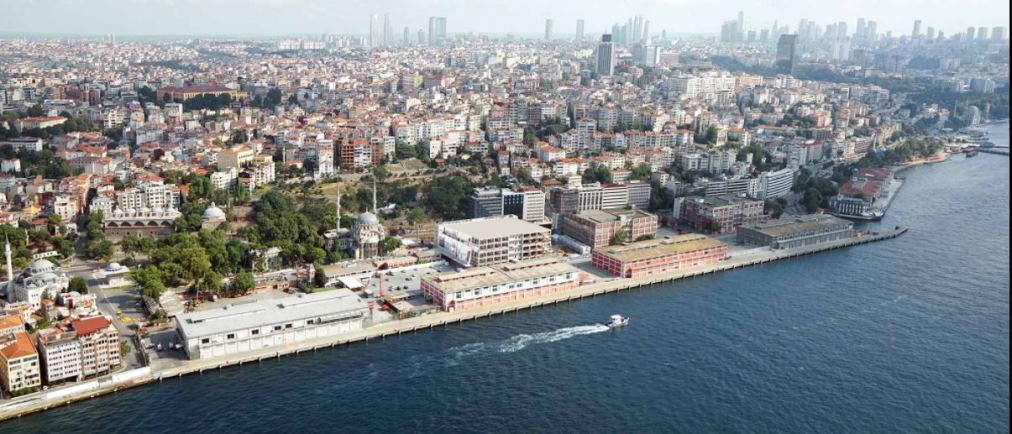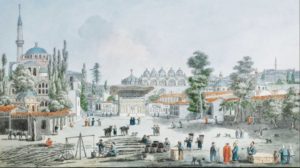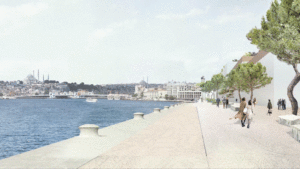On May 5, 2017, Dror and Gensler were selected among several international shortlisted firms as winners of a competition to masterplan the repurposing, renewal, and reconnection (in a good example of the 3Re Strategy at work) of Galataport, a vital site on the Bosphorus in the heart of the ancient city of Istanbul, Turkey.
Situated across from the Old City, the 110,000-square-meter area includes the Karaköy and Salıpazarı Quays and boasts a cluster of historic landmarks and contemporary cultural icons, including the Istanbul Modern.
A significant portion of the site hosts an active cruise terminal, and is closed off to the public due to security measures. Its 1.2-kilometer-long boardwalk is restricted to maintenance, deliveries, and the five to six thousand passengers that disembark each ship, thus depriving local citizens of its breathtaking views.
While the cruise port function will be retained, thanks to an innovative new technological approach, the waterfront will now serve a new public purpose: that of restoring views, drawing both local and tourists to the area, thus regenerating the neighborhood.
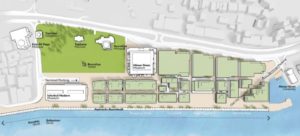 Dror and Gensler’s winning masterplan, which is now under construction, opens up this stretch of coastline for public use through a revolutionary cruise terminal—the world’s first underground cruise operation.
Dror and Gensler’s winning masterplan, which is now under construction, opens up this stretch of coastline for public use through a revolutionary cruise terminal—the world’s first underground cruise operation.
“Through the collaboration of our partners, we’ve been able to relocate the cruise terminal in an unprecedented way and design a plan that respects the cultural texture of Istanbul,” explains Dror Benshetrit, founder of Dror. “It is our hope that the revitalized neighborhood will reconnect local residents and visitors with nature, enrich their social life, and ultimately, improve their well-being.”
It’s made possible by a hydraulic boardwalk and gangway system invented in collaboration with Miami-based interdisciplinary firm BEA, the entirety of the cruise operation’s complex logistics takes place underground.
When a ship docks, the boardwalk hatch opens and transforms into a perimeter wall that secures the area. A gangway rises to meet the ship doors and transports passengers to the underground terminal levels.
This innovative system reduces the cruise operation’s ground-level footprint to a 3.5-meter-wide strip of land that’s only in use when and where ships are docked, freeing over 60,000 square meters of accessible waterfront.
Above ground, Dror and Gensler opted to create a vehicle-free, pedestrian-only neighborhood that harmonizes with the city’s existing urban fabric and encourages bustling street life through a vibrant mix of shops, restaurants, cultural attractions and offices.
Small, pixel-like buildings flank intimate streets and step down in scale towards the waterfront, creating opportunities for rooftop terraces with beautiful views at every level.
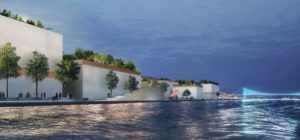 Large, open plazas respect standing monuments and facilitate moments of reflection and discovery. Elevated walkways weave the neighborhood together, resulting in a multi-layered pedestrian experience. Abundant vegetation frames the experience throughout, creating a lush environment that blends old and new, city and sea.
Large, open plazas respect standing monuments and facilitate moments of reflection and discovery. Elevated walkways weave the neighborhood together, resulting in a multi-layered pedestrian experience. Abundant vegetation frames the experience throughout, creating a lush environment that blends old and new, city and sea.
Dror and Gensler believe the plan will bring new vibrancy to the region, while paying homage to its rich history. Dror’s other innovative work in Istanbul has been previously reported in REVITALIZATION.
“The realization of our collective vision will transform a restricted commercial area into a world-class urban waterfront destination,” concludes Oliver Schaper, Senior Associate at Gensler.
All images supplied by Gensler.

